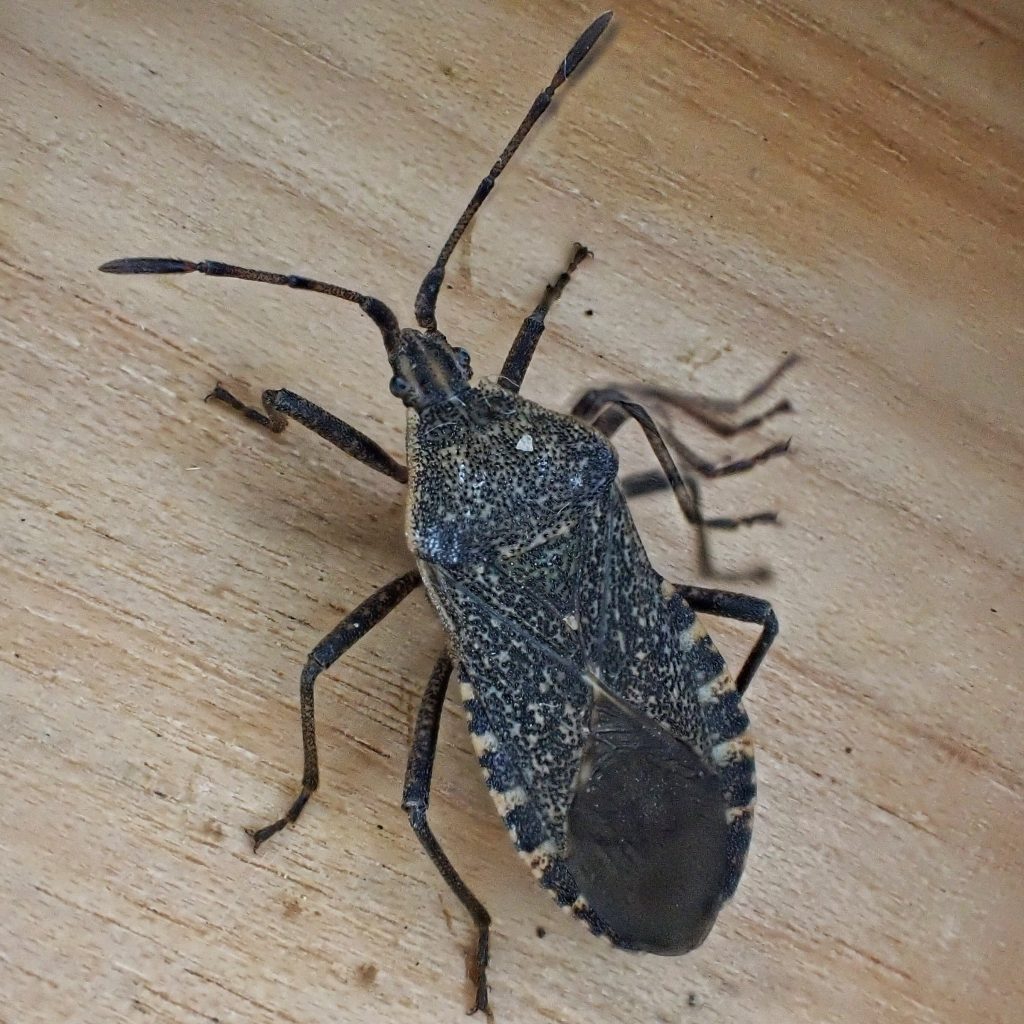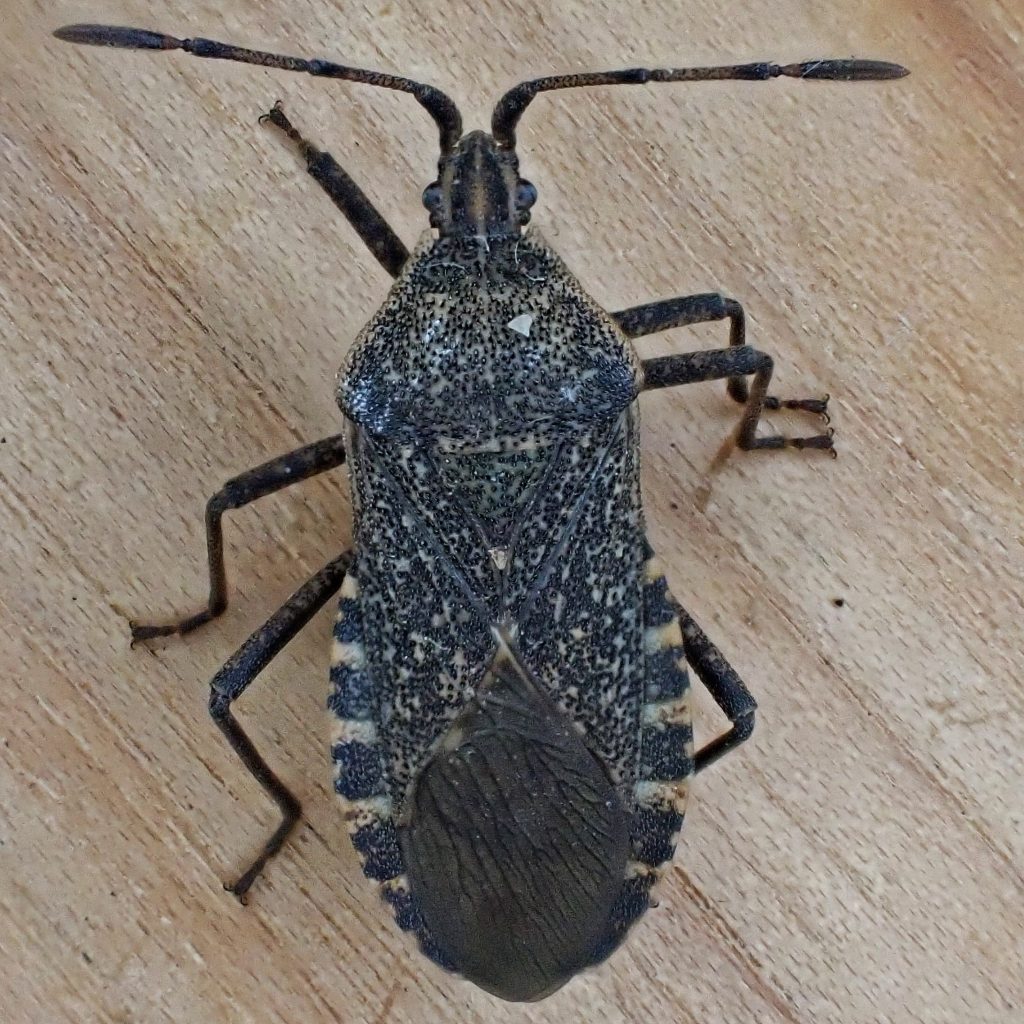
This true bug in the family Coreidae was a great find for me, but maybe not such a great thing in general. It was the first entry for this species on BugGuide for the state of Washington, although they are well known from the eastern part of the state. But they were not previously known from western Washington, and though the flora, fauna, and climate of Clark County are more akin to that of the Willamette Valley (where Anasa tristis had previously been recorded) than it is to the Puget Trough, still the Columbia River is often a barrier to a species expansion, and once it’s been breached it’s much easier for things to spread northward. Anasa tristis (often called squash bugs, though that name also is used for Anasa spp. as a whole, and even for other insects) are native to the Americas, but they are nonetheless a serious pest of pumpkins, squash, and other cucurbits, and their previous absence from western Washington and w BC has been a boon to growers, both large scale and small, of those crops. It may be interesting to note that I found this handsome bug on the wrought iron fence of the old cemetery in urban Vancouver, Washington, rather than in an agricultural area or somebody’s garden.
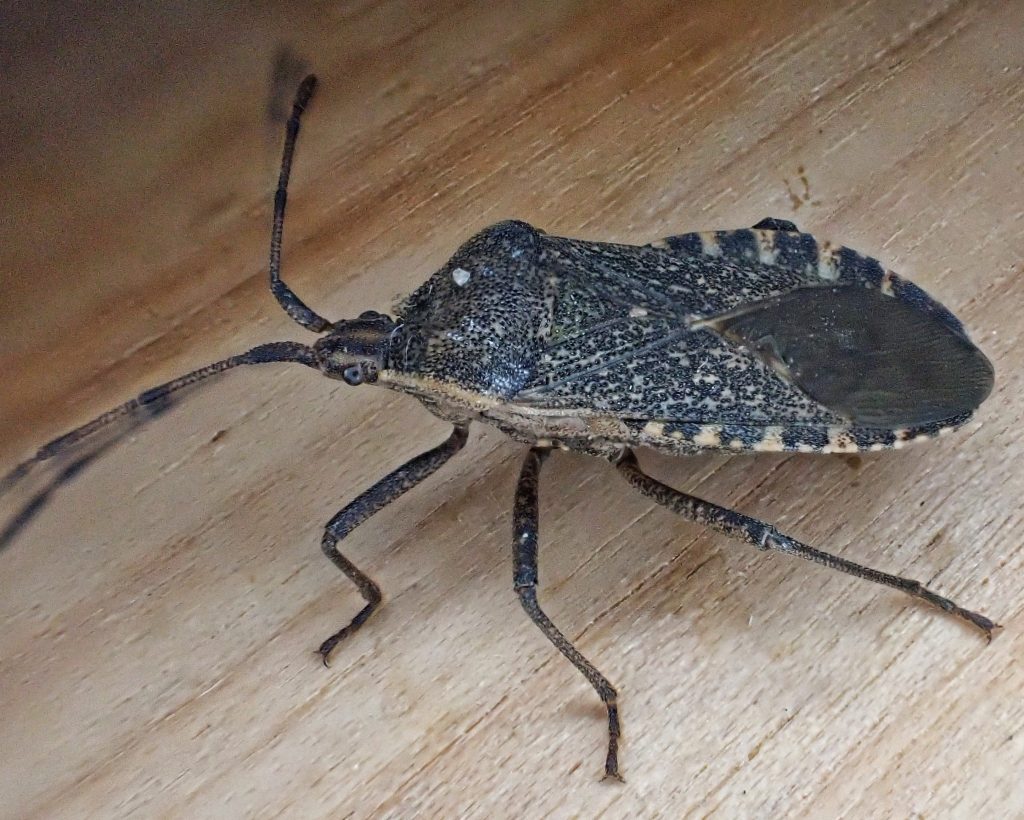
Both nymphs and adults feed by sucking the sap from the leaves and fruit of their hosts. It used to be thought that their saliva was toxic, but it’s now known that they physically damage the xylem and leaves, causing them to wilt, darken, and die. They are also vectors for the bacteria Serratia marsescens, which causes cucurbit yellow vine disease which can kill the plants, as well as potentially causing urinary and respiratory problems in humans. They are apparently a difficult pest to get rid of, since insecticides that control them also kill most beneficial bugs, and known biocontrol agents such as the tachinid fly Trichopoda pennipes don’t kill their hosts quickly. But, according to this study (Rondon et al.; 2003), the ladybird beetle Coleomegilla maculata and the big-eyed bug Geocoris punctipes show promise as biocontrol agents.
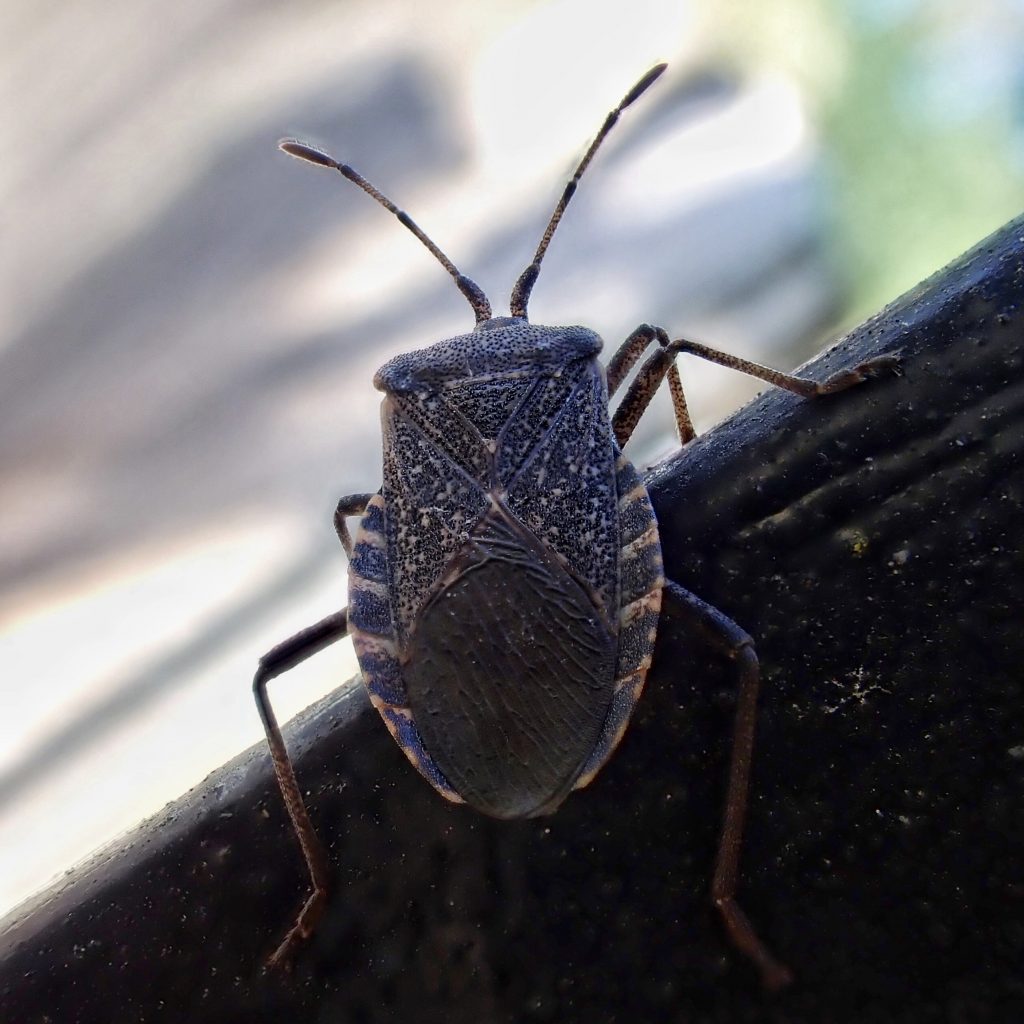
Description-Large (13-17mm), dark brown with light speckling true bug, with a triangular pronotum, yellowish dashes on the hemelytra margins, and black wing membrane; pronotal margins are yellowish and that color extends to the margins of the head, which has a similar colored line in the middle that extends onto the pronotum.
Similar species–Leptoglossus spp. are narrower, and have flattened hind tibia; Ceraleptus spp. are smaller, lighter in color, and have a trapezoidal pronotum.
Habitat-Agricultural areas where their host plants (members of Cucurbitaceae) can be found, which includes gardens; also may be found where wild cucurbits like the native Marah oregana or the introduced Bryonia alba or Echinocystis lobaria grow.
Range-North, Central, and South America; found region wide except for sw BC and most of w Washington.
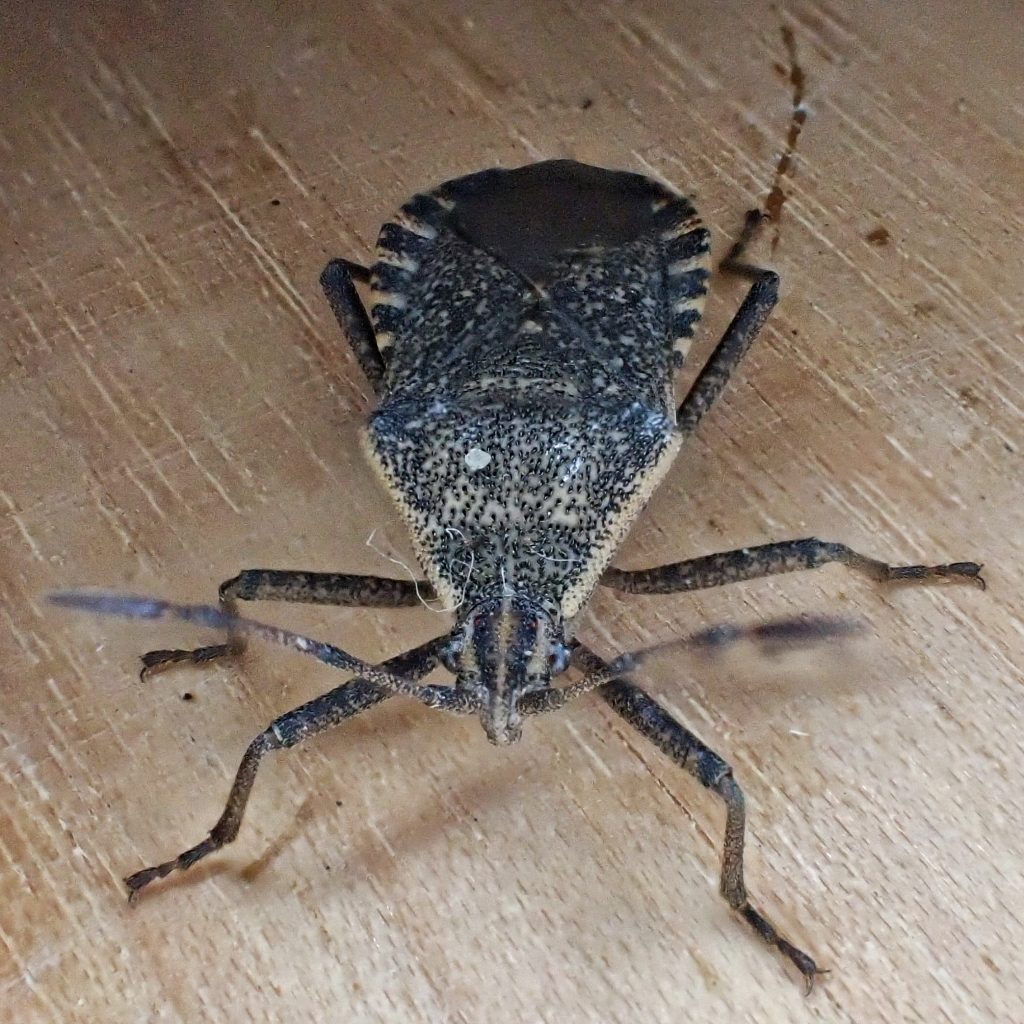
Eats– Both nymphs and adults eat members of the family Cucurbitaceae, which includes, among others, pumpkins, squash, zucchini, watermelon, cucumber, and the wild, native, Marah oregana.
Eaten by-Eggs parasitized by wasps in the families Encyrtidae and Scelionidae; the feather legged tachinid fly Trichopoda pennipes lays eggs on adults, and their larva consume genitalic material and eventually kill the host when they (the flies) emerge; Anasa tristis emit defense chemicals when attacked, which undoubtedly deters some (but probably not all) insectivores.
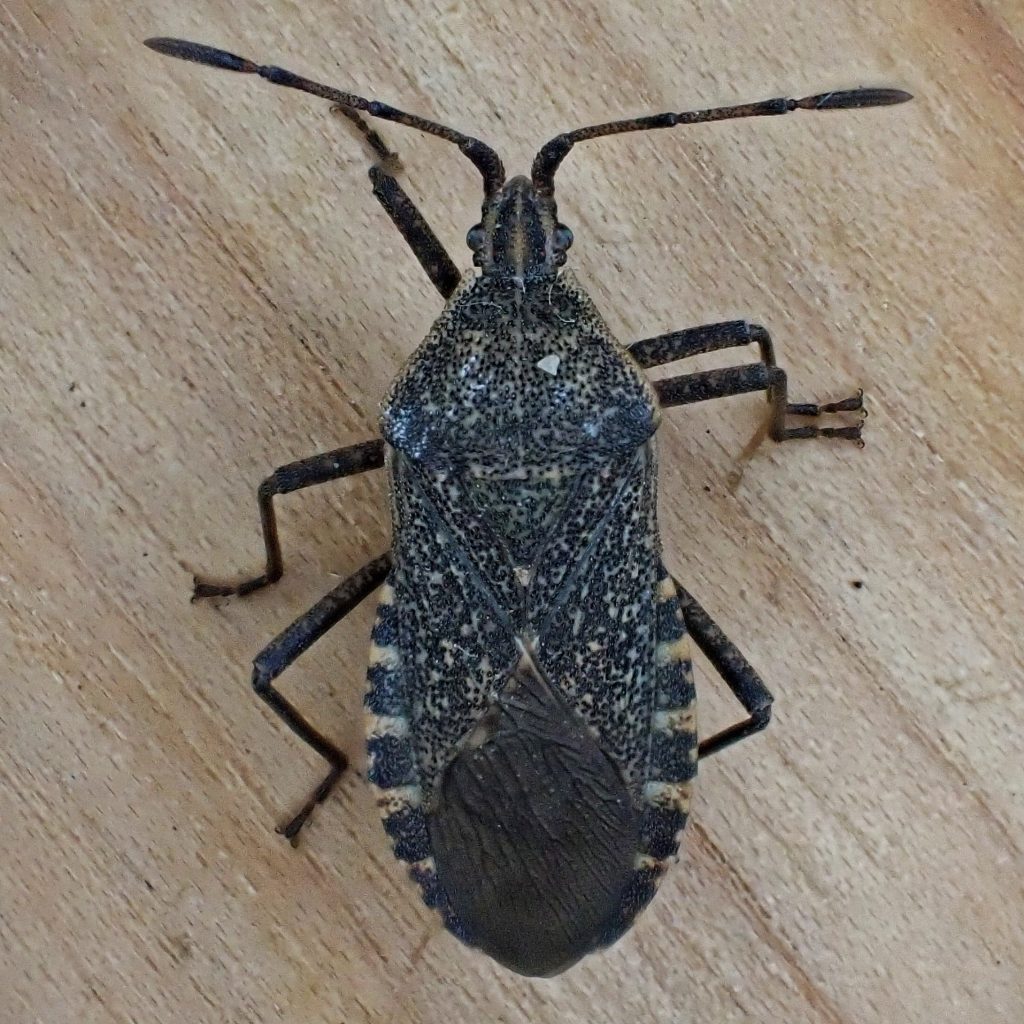
Adults active-Year around, but most commonly encountered in the spring and summer, because they take shelter during the fall and winter.
Life cycle-Mostly univoltine in our region, but may have a second brood in optimal warmth/resource situations; around 18 bronzy, flattened eggs are attached to the underside of the host plant’s leaves in loose or tight clusters that are regularly arranged; eggs hatch in 7-9 days, and nymphs go through 5 instars, reaching maturity in about 33 days; usually overwinters as adults but second broods may overwinter as late instar nymphs
Etymology of names–Anasa may be from the Greek word for queen, or from the Latin word for duck, or something else entirely, since I can find no explanation of the name. The specific epithet tristis is from the Latin word for ‘sorrowful’ but I cannot ascertain if that is because of a melancholic aspect of the bug, or the feelings they induce in a farmer, or some other completely different reasoning.
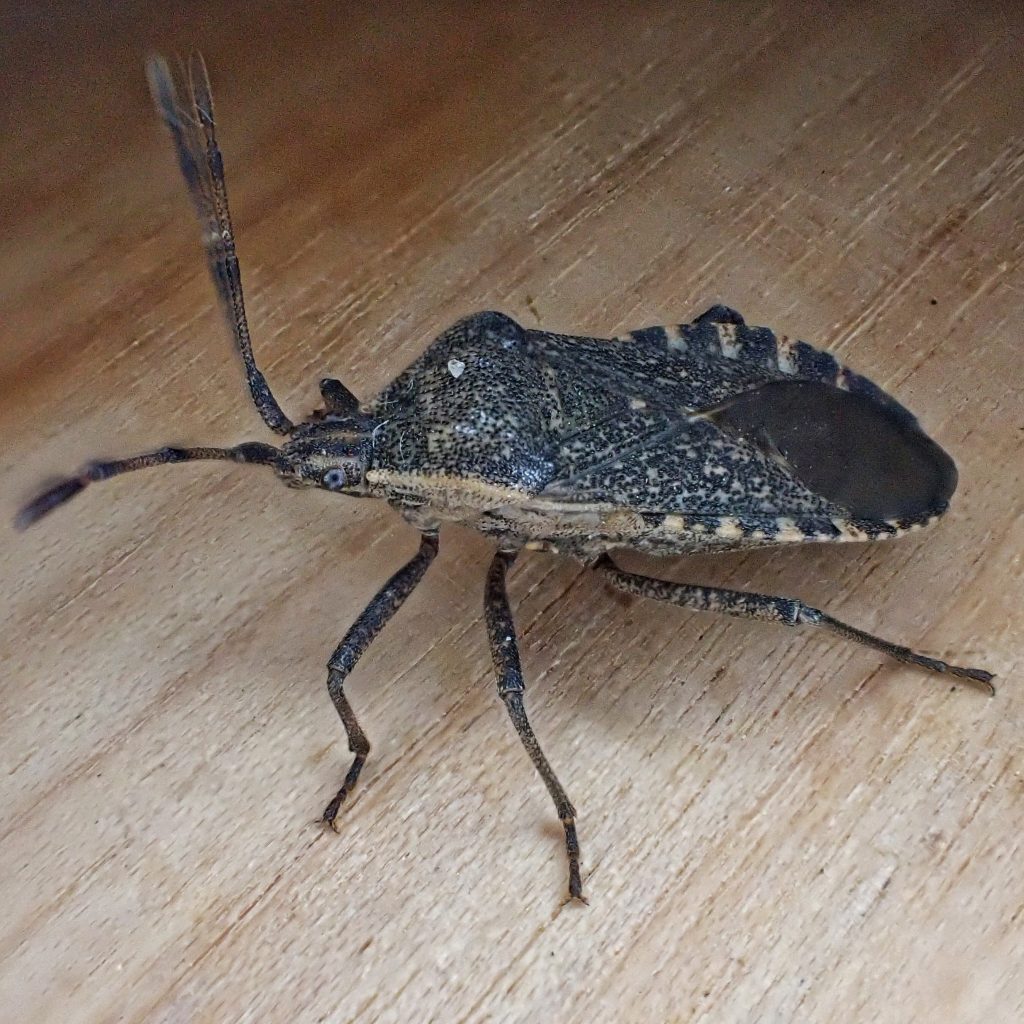
https://bugguide.net/node/view/67889
https://entnemdept.ufl.edu/creatures/veg/leaf/squash_bug.htm
https://en.wikipedia.org/wiki/Serratia_marcescens
https://plantcaretoday.com/neem-oil-squash-bugs.html
